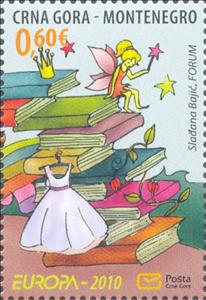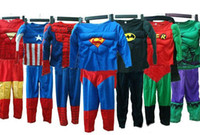Stamp: Europa (C.E.P.T.) 2010 - Children's Books (Montenegro 2010)
Europa (C.E.P.T.) 2010 - Children's Books (Montenegro 2010)
22 April (Montenegro ) within release Europa (C.E.P.T.) 2010 - Children's Books goes into circulation Stamp Europa (C.E.P.T.) 2010 - Children's Books face value 0.60 Euro
| Stamp Europa (C.E.P.T.) 2010 - Children's Books in catalogues | |
|---|---|
| Michel: | Mi: ME 235 |
Stamp is square format.
Stamp from souvenir sheet.Also in the issue Europa (C.E.P.T.) 2010 - Children's Books:
- Souvenir Sheet - Europa (C.E.P.T.) 2010 - Children's Books face value 1.50;
- Stamp - Europa (C.E.P.T.) 2010 - Children's Books face value 0.60;
- Stamp - Europa (C.E.P.T.) 2010 - Children's Books face value 0.90;
- Mini Sheet - Children's Books face value 8*0.60;
- Mini Sheet - Children's Books face value 8*0.90;
- Stamp with Attached Label - Boy on a Pile of Books, Boat, Car, Rabbit in a Magicians Hat face value 0.90;
- Stamp with Attached Label - Stack of Books and Girl, Butterfly, Castle, Rainbow face value 0.60;
Stamp Europa (C.E.P.T.) 2010 - Children's Books it reflects the thematic directions:
A book is a medium for recording information in the form of writing or images. Books are typically composed of many pages, bound together and protected by a cover. Modern bound books were preceded by many other written mediums, such as the codex and the scroll. The book publishing process is the series of steps involved in their creation and dissemination.
In British heraldry, a coronet is any crown whose bearer is less than sovereign or royal in rank, irrespective of the crown's appearance. In other languages, this distinction is not made, and usually the same word for crown is used irrespective of rank (German: Krone, Dutch: Kroon, Swedish: Krona, French: Couronne, etc.) In this use, the English coronet is a purely technical term for all heraldic images of crowns not used by a sovereign, and implies nothing about the actual shape of the crown depicted. A Coronet is another type of crown, but is reserved for the lower ranks of nobility like Marquesses and Marchionesses, Earls and Countesses, Barons and Baronesses, and some Lords and Ladies. The specific design and attributes of the crown or coronet signifies the hierarchy and ranking of its owner.
A star is a luminous spheroid of plasma held together by self-gravity. The nearest star to Earth is the Sun. Many other stars are visible to the naked eye at night; their immense distances from Earth make them appear as fixed points of light. The most prominent stars have been categorised into constellations and asterisms, and many of the brightest stars have proper names. Astronomers have assembled star catalogues that identify the known stars and provide standardized stellar designations. The observable universe contains an estimated 1022 to 1024 stars. Only about 4,000 of these stars are visible to the naked eye—all within the Milky Way galaxy.
In clothing, a suit is a set of garments made from the same cloth, usually consisting of at least a jacket and trousers. Lounge suits (also known as business suits when sober in colour and style), which originated in Britain as country wear, are the most common style of Western suit. Other types of suit still worn today are the dinner suit, part of black tie, which arose as a lounging alternative to dress coats in much the same way as the day lounge suit came to replace frock coats and morning coats; and, rarely worn today, the morning suit. This article discusses the lounge suit (including business suits), elements of informal dress code.




